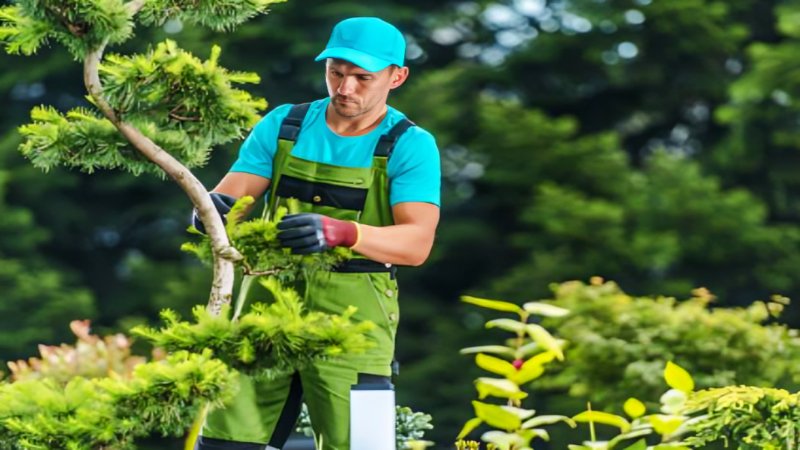Maintaining a vibrant and healthy landscape is one of the most effective ways for homeowners to increase their curb appeal. Trees are focal points of your property, and their appearance throughout the year greatly influences first impressions. By practicing seasonal tree care, homeowners can not only enhance the visual charm of their residences but also protect their long-term investment.
Learning best practices from professionals like Fielding Tree Care gives your landscape the best chance to thrive while contributing to your home’s overall attractiveness.
Seasonal tree maintenance is more than a cosmetic concern. It’s about encouraging robust growth, preventing potential hazards, and maximizing the functional roles trees play in your landscape.
Healthy trees provide shade, privacy, and a welcoming atmosphere while enhancing your home’s value and maintaining its continued curb appeal. Committing to a routine care strategy means your trees will look their best and provide lasting value.
Neglecting seasonal tree care can lead to numerous issues, including increased susceptibility to disease, storm damage, and pest infestations. It’s essential to invest in proactive maintenance, including pruning and watering, as well as mulching and winter protection. These small interventions, when combined, make a significant difference in both aesthetics and property value.
Whether you’re sprucing up your yard for a future sale or want your home to stand out in the neighborhood, proper tree care should be a top priority. A well-planned care routine delivers year-round benefits for safety, savings, and satisfaction.
Spring Renewal: Pruning and Fertilization
Spring is the season of growth and renewal, making it the optimal time to give your trees the nourishment they need to thrive after the quiet of winter. Pruning in spring removes dead or damaged branches, shaping the tree’s canopy for a balanced appearance. This enhances health and safety and contributes significantly to curb appeal.
Alongside pruning, fertilization provides trees with the nutrients necessary for vigorous spring growth. According to Birch Tree Care, these practices stimulate robust budding and leafing, leading to a lusher and more attractive landscape.
For homeowners in Gainesville looking to maintain beautiful and healthy landscapes, professional tree service Gainesville GA ensures your trees receive expert care tailored to the local climate and soil conditions.
Summer Vitality: Watering and Pest Control
Summer introduces heat stress and increased pest activity. Deep, consistent watering is essential, particularly during prolonged dry spells. Focus on watering the base to encourage deep root systems, which help trees withstand drought and high temperatures.
Regular monitoring for insects and disease spots is also crucial during these months. Implementing integrated pest management strategies, such as encouraging beneficial insects and minimizing chemical use, helps keep trees healthy and looking their best while protecting the environment.
Fall Preparation: Mulching and Disease Prevention
As leaves begin to turn, it’s time to prepare trees for colder weather. Mulching insulates root systems against temperature fluctuations and moisture loss. Be sure to spread mulch evenly around the base, keeping it away from the trunk to prevent rot.
Autumn is also crucial for disease prevention; please inspect for fungal growth or signs of blight and address any issues promptly. Forbes highlights that strategic fall pruning not only enhances visual appeal but also reduces the risk of winter storm damage.
Winter Protection: Structural Support and Inspections
Winter can be unforgiving, particularly for young, newly planted, or weakened trees. Structural supports such as staking and wrapping help prevent breakage under heavy snow or ice loads. Seasonal inspections detect cracks, splits, or pest activity before they become significant problems. Winter maintenance helps you avoid costly damage while preserving a tidy, attractive appearance even in the coldest months.
Enhancing Property Value Through Tree Care
Healthy, mature trees consistently deliver the most substantial return on landscaping improvements, making them among the top ways to enhance property value. Data from the U.S. Forest Service indicate that healthy trees can increase a home’s value by up to 20%. Seasonal care turns trees into long-term assets, helping your property stand out in competitive markets.
Energy Efficiency Benefits of Well-Maintained Trees
Trees in the right places can drastically impact your home’s heating and cooling needs. Shaded areas beneath healthy trees can be up to 25°F cooler than surrounding spaces, according to the U.S. Department of Energy. Conversely, windbreaks created by dense tree lines lower winter heating costs. Caring for trees through all seasons ensures they continue to provide these substantial energy savings.
Safety Considerations in Seasonal Tree Maintenance
Tree hazards, such as dead branches or weakened trunks, pose real threats to people and property. Seasonal inspections and timely maintenance reduce the chance of falling limbs or uprooting during storms. Addressing issues early improves overall safety while maintaining a pleasing landscape for all who visit your home.
When to Seek Professional Tree Care Services
While homeowners can handle basic tasks like watering and mulching, complex pruning, pest treatments, and large tree removals require professional expertise. Certified arborists bring specialized knowledge, equipment, and a safety-first approach to protect both your trees and your home. For major projects or if you encounter signs of tree decline, it’s best to consult trusted professionals.
Making seasonal tree care a central part of your home maintenance routine offers a multi-layered return: beautiful curb appeal, increased property value, improved energy efficiency, and lasting safety. By following expert guidance and planning for each season’s unique needs, you help your trees and your property stay strong and valuable for years to come.
